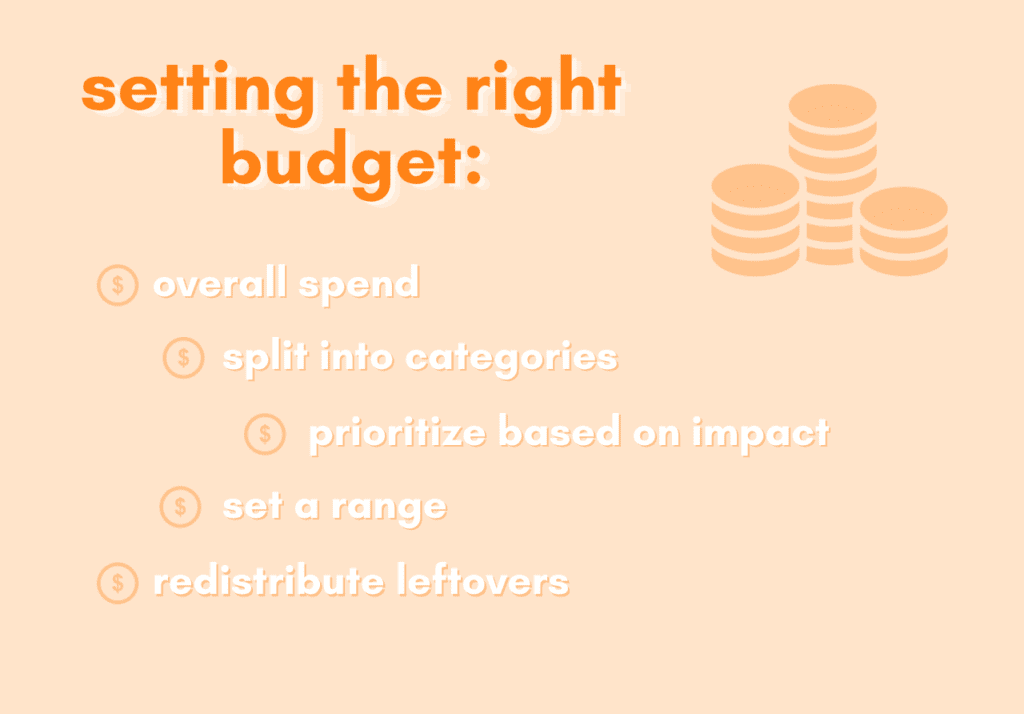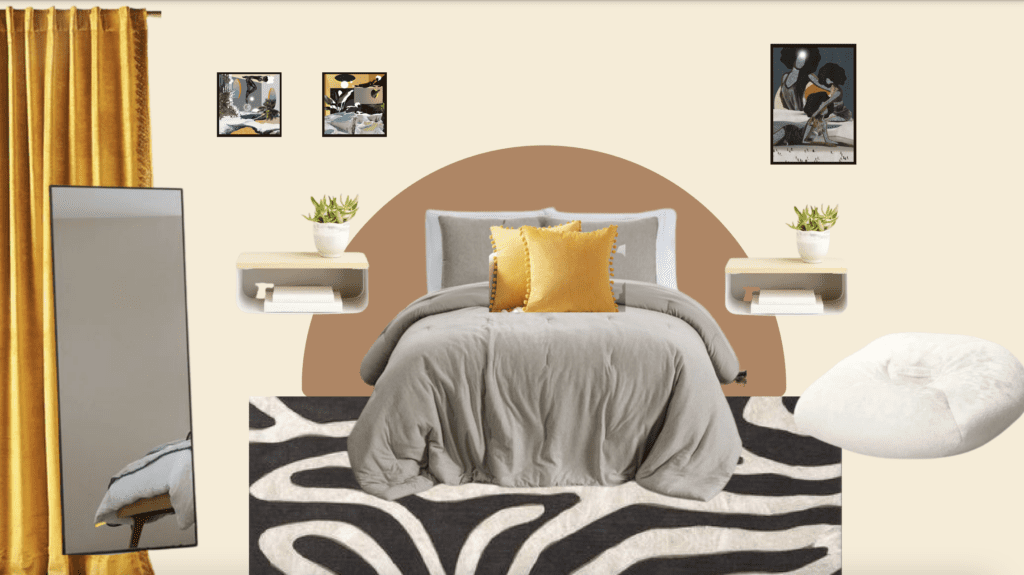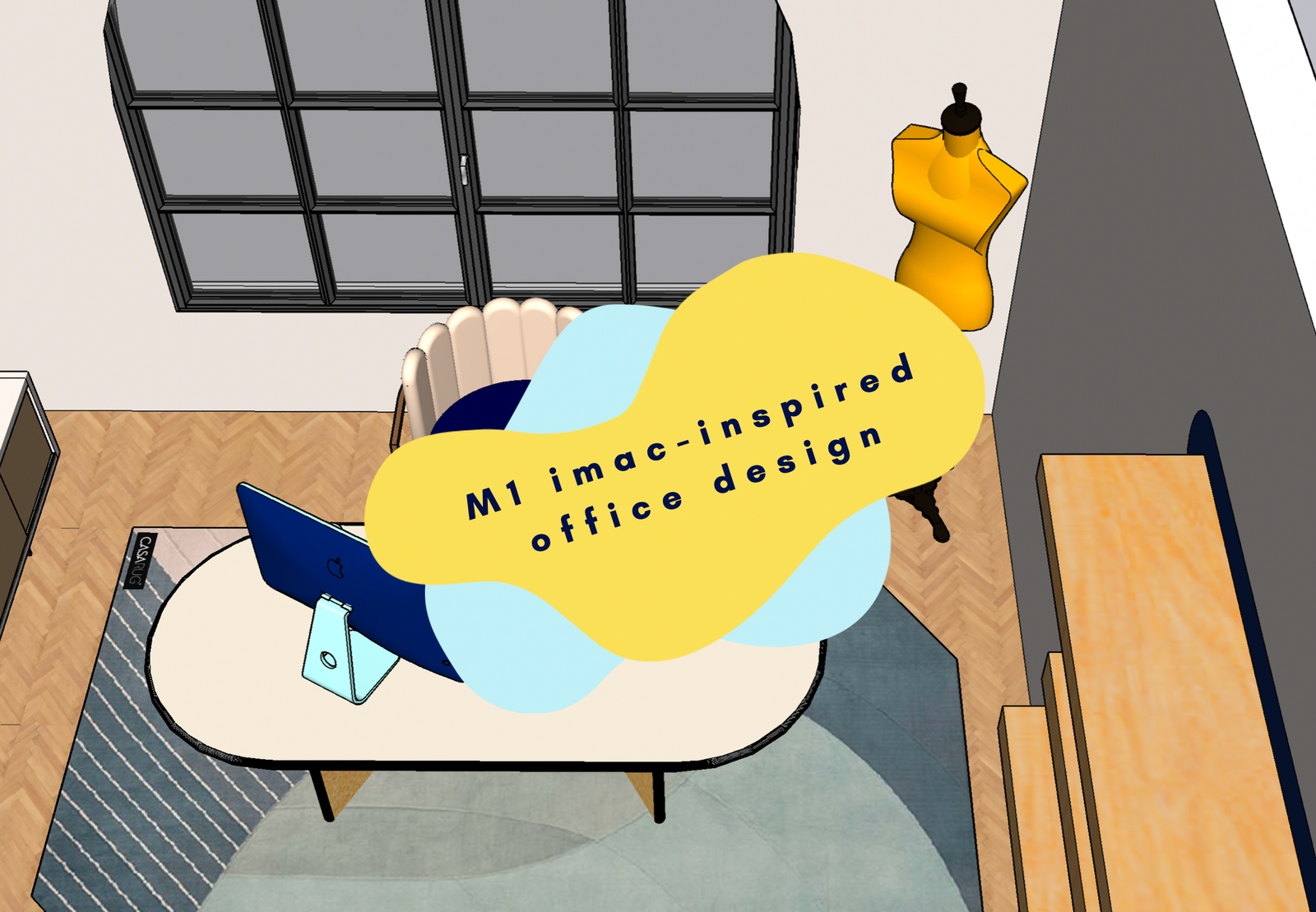It’s easy to get carried away when you’re decorating. That one splurge easily turns into several splurges. Then all of a sudden, you’re hundreds or thousands of dollars over your interior design budget. But it’s worth it, because your place looks so beautiful, right?
Wrong.
Of course we’d all like to spend a million dollars making our home or office or whatever it is that you’re designing beautiful. But not setting – and sticking to – a budget can often make us chase unrealistic expectations. This can often lead you to constantly push for bigger and better and not find satisfaction in a totally well-executed project. It’s a slippery slope.
On the flip side, having a solid interior design budget can provide a lot of benefits. It can 1. give you a clear expectation of your capabilities with the project. and 2. force you to be more creative. There’s nothing that helps you come up with unique alternatives than realizing you don’t have money to throw at everything. Boundary-induced creativity is one of the best benefits of a budget.
so how do you stick to your interior design budget?
This is one of the most crucial steps in any interior design process. A lot of this comes down to setting an effective budget, which I’ll go into detail about below. But here are some general tips for making sure that you don’t go over budget:
- get an accountability partner – whether it’s your domestic partner or roommate that has an active hand in the project, or a friend/family member/significant other who’s willing to help you out. Sometimes something as simple as someone saying “you told me not to let you go over, so don’t do it” to you is the extra push you need to stop yourself from overspending.
- create a separate account with only the allotted budget – this could be an envelope of cash, a prepaid VISA gift card, or a separate bank account that you open up. Once the money is gone, it’s gone, so you can’t go over. And fight the urge to use a different card at any point.
- keep track of your spending – one of the easiest ways to go overboard is on accident. Any time you make a purchase, write it down or put it as a line item in a spreadsheet. And before you make any purchase, check in to see how this affects your overall budget. Keeping track of it this way helps you be a lot more intentional about your spending and ensures that you will stay on track.
tips for setting an interior design budget you can stick to
Like I said, the most important factor in whether or not you stick to your interior design budget is being super intentional when you set it. The following tips can help you create an effective budget from start to finish. This can be adapted whether you’re looking to spend $200 or $20,000.
So let’s dive in


what’s your overall number?
Before you start getting into specifics, decide what you can reasonably invest into this project. There are a few things to consider:
- what’s the scope of the project – i.e. one room or a full house? accessorization or a full furniture purge?
- how long will the changes remain? – it’s okay to go a little more all-out and potentially even acquire some debt on a remodel project (this can even bring some ROI in the future). But if you are simply redecorating, it’s best to pay cash. Is this longterm furniture or things you will likely scrap/sell the next time you move?
- what is the desired outcome? – your budget for an office decoration can probably be a little higher than that for a bedroom, since professional presentation is important. Do you want to redecorate to have a stylish and comfortable place to host family, or you just want pretty stuff to look at. Either is totally fine, but it may be worth investing a little more in a place to host than decoration for vanity reasons.
And of course, take into account your current financial situation. We could all try to justify a $50,000 budget for a single room, but if that is not proportional to your income and expenses, scale it back for now.
Once you have your number, that’s the amount you put in the envelope/gift card/bank account I mentioned before. That’s your number, and you’re sticking to it.


split your budget into categories
Looking at one overarching number can be a little intimidating. Especially if your budget is a little bit higher. So the best place to start is by breaking it down into more specific chunks.
It’s up to you and how your brain works as to how you want to break it down.
Most simply, you can divide the budget between rooms. An example with a $10,000 budget could be: $4,000 for the living room, $2,000 for the bedroom, $3,000 for the home office, and $1,000 for entryways, hallways, etc.
You could also get more specific by allocating a certain amount for furniture vs. accessories vs. paint for each of these rooms. So within that $4,000 budget for the living room, you allocate $1,500 for a couch, $1,500 for other furniture, $500 for accessories, and $500 for paint.
If you are making over a single room, it’s helpful to get really specific since that one room is your only focus.
Setting these hyperspecific allocations may be done simultaneously with scoping out furniture/trade pricing. You may not know at the very beginning of your project what a custom rug will cost, or even how much your dream coffee table is. So setting these budgets is a process. You can always start broader and narrow it down as you go.


how to prioritize where your budget goes
You may be thinking after that last section: okay, so how do I know which room/objects I should be spending the most on??
Don’t worry, I won’t leave you hanging.
There are several different factors that can affect this decision, and it can vary from person to person. But here are the main things to consider:
[when it comes to deciding budget between rooms]
- which rooms do you use the most? If you are always in your living room and your home office hardly gets touched, that may be an indicator.
- which rooms have you been neglecting? Back to the office example above – maybe you only don’t use it because it’s so fucking ugly. If so, it may need a little more attention than other rooms. Another example: you keep ignoring your bathroom so it looks like it’s still from 2003. That might deserve a little extra budget.
- if all else remains constant, which room just has more stuff that has to be paid for? A dining room just objectively has less furniture than a living room, so the budget would naturally be lower. And a full kitchen reno will be more expensive than likely any other room due to the expensive cost of appliances, so this should be taken into account.
[when you’re deciding budget between objects]
- which has the biggest impact? This can be very straightforward like the fact that you interact with a couch in your living room more than a lounge chair in your office or bedroom. But it can also be completely up to your taste. If you value the art you display on your wall a lot and want your home to feel like a gallery, then perhaps allocate more budget for art/accessories. The simplest way to designate budget based on impact: picture that you’re walking in your home – what do you want your eyes to immediately go to? That’s where you put more money.
- how long will it last? No matter how cool and impactful something is, if it won’t last, you should likely not be paying a huge portion of your budget for it. But if you are buying a piece that will last – in quality and aesthetic – for years to come, then it makes more sense to invest more in it.


create a range in your interior design budget
I said before that forcing yourself to work within boundaries helps you get more organized and be more creative. However, I’m going to add a caveat to that here.
Don’t be so strict with yourself that you stand in your own way of creating a design you’ll be obsessed with. The way to balance this with a budget is to include ranges.
At the lower end of your budget, set a number that reflects your modest budget. If you end up lower than that because you find such great deals, great! But this shows a “minimum” for the project. Now, also include a more “splurge”-y end of the spectrum. Ideally, you’d be under this, but it’s a number that you’re willing to go up to. This is the amount you should have set aside just in case.
You can have this range just for the overall budget. In that case, just keep track of any inevitable overages in the specific categories to make sure that you’re not above your splurge budget.
Or, you could get real specific and add a range for each of the specific categories. Just make sure that the maximum for all of these added together doesn’t exceed the maximum of your overall budget.


redistribute extra money left over from categories
If you close out one of your categories and still have a little bit of budget leftover, feel free to carry it over somewhere else! Just allocate it to the place where it can have the biggest impact.
Note: try to not redistribute money mid-project. If you were intentional with your budget-setting from the beginning, this shouldn’t be necessary. Making a ton of little changes throughout can easily derail you, make it harder to keep good track of your spending, and can lead to a blown-out budget.
tips for saving money
So yay, you fully set your budget and took precautions to make sure that you don’t go over. That’s great!!
But sometimes, you just feel like you NEED more budget, but you don’t have any left. That’s why it’s important to save money where you can. So if you’re struggling to keep it under budget, these tips should help.
repurpose/refurbish
You’d be surprised the amount of stuff that you already have that you can reuse. Whether it just needs to be placed differently, moved to a different room, or given a fresh coat of paint or more extensive modifications.
Tap into all of your current resources first before you move onto buying other stuff if you’re worried about staying under budget.
trade
If you’re not starting from scratch, you likely have a lot of stuff you’re getting rid of. Use this to your advantage and see if there are any friends/coworkers/family who want to make a swap. You could also use things like Craigslist and Facebook to see if a stranger wants to trade.
the free side of the internet
Speaking of Craiglist and Facebook, did you know that there are whole pages dedicated to just giving shit away for free?
You can easily find all of the free stuff on Craigslist, but there are groups like “Buy Nothing” on FB that are filled with people just wanting to get rid of stuff for one reason or another. And you can find some pretty cool stuff, too.


You know what they say: one man’s trash is another man’s treasure.
patience
This seems like a 🙁 option, but it can be the right one in a lot of cases.
Just break your project down in chunks. Maybe this fall you do a couple of rooms, and this spring you do a few more. Or you make some small changes to a room and go in later to replace some other stuff.
I know you don’t get that instant gratification of having a completely redesigned place all at once. But it’s better to wait and give everything the budget deserves than to do it all at once and be underwhelmed.
You made it to the end of this post, so you must be REEEAL serious about creating the perfect interior design budget. You got this! If you keep these tips in mind, you’ll have a much easier time getting it done on budget and beautifully.
Need some more inspo for your project? Sign up for my free 7-day email list where every single day for a week, I’ll give you the best interior design tips out there. These tips dig deep and help you challenge yourself to create the best damn design you’ve ever done. And you’ll be getting them all in a bite-sized email, complete with some killer inspo pics.
Sign up below!
About me
Hey my name’s Hannah Michelle Lambert, the voice behind homey homies. I’m an LA-based designer, writer, and content strategist. I’m passionate about the intersection of productivity and creativity. I love talking about creative habits, technology, processes, and everything in between that helps me blend the Type A and Type B parts of my brain.









Leave a Comment